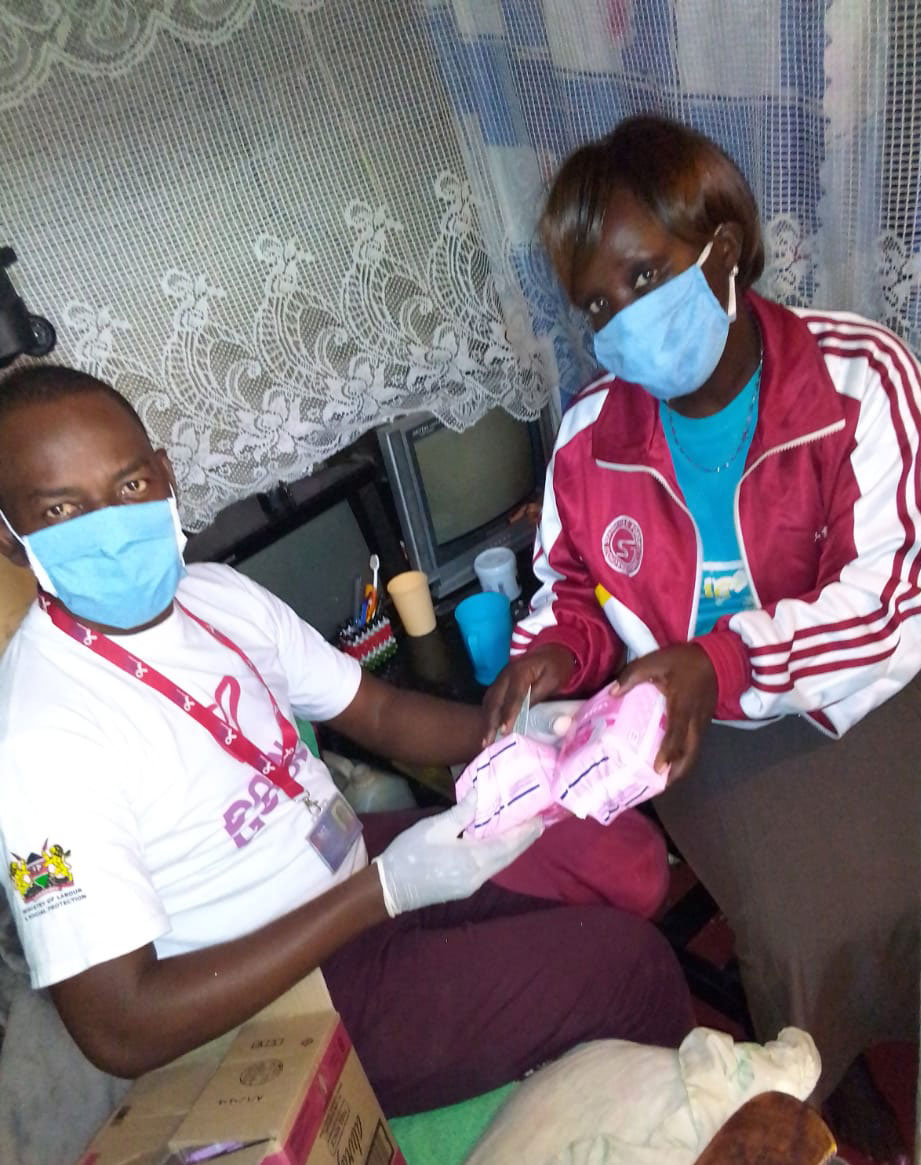People with disabilities during COVID-19: A story from Kenya By Joseph Etyang
In Kenya, people with disabilities make up 10 percent of the population, an average of 4.4 million people. 66 percent of these people live in rural areas while 44 percent are in urban settlements, mostly for work purposes. Nairobi is where most opportunities are found and people tend to come here in search of a better living.
I am a Kenyan deaf man who works as a counselor so I can easily relate to the way of life of people living with disability. It is not easy to get opportunities once you are disabled because most people do not believe you can deliver on your duties perfectly, however some have had the chance to get the opportunities and have raised awareness about different disabilities in the country.
Communication is important
I am keen to stay updated on the ongoing issues of the world by watching the news and try to get connections through networking in events and opportunities possible that will give me a platform to talk about disabled people and the issues they go through. I make it a priority to engage with the disabled people and also make sure they get proper information about current important issues. Communication is a huge barrier, therefore a lot of people with disabilities get misinformed or not informed at all. I take my time to counsel disabled people and also spread health awareness.
COVID-19 brings new economic challenges
During the COVID-19 pandemic period, the challenges facing disabled people have been rampant and most of them feel neglected. I go to work as an essential service provider, but I cannot help but notice the disabled people in the streets begging for money or food. Some of them go with their little toddlers on the streets. At a time when everyone is being urged to stay home and quarantine, it is inevitable that disabled people will stop coming to the streets.
I am in a support group for disabled people where we get to share our experiences or seek help. Currently everyone has been talking of a lack of income and having to face the uncertainty that comes with COVID-19. A majority of the people with disabilities are casual workers, hawkers or people who do small street jobs just to get enough for a day. With the stay at home regulation a lot of this jobs are closed, fewer people are coming to the city centre and people are not making enough for a single meal. Disabled people end up sleeping hungry and having a burden of unpaid bills on them. The little money one gets ends up being used to buy food at least for a single meal for the family with a number of children hoping to be fed. Because they have to prioritise people will lack the necessities for this time like the face masks, soap and water. With the help of well wishers I have been distributing sanitary towels to the ladies to at least help them at this time where there is little to no income. A lot of them end up using ragged clothes as pads.

Hospital avoidance
The Kenyan government put in place curfews to curb the spread of the Corona Virus, they also restricted movement in and out of Nairobi and some other towns where the spread is high. This prevents people with disabilities from going for treatment from their doctors. Most of the people have now skipped therapy and medication which takes a toll on their health. Due to the rise in fear of the Corona Virus, most people are avoiding hospitals and health facilities for treatment of other conditions. People have not had their health monitored.
Safety when travelling
Many disabled people are physically challenged, they use wheelchairs, or move by supporting themselves on walls or need a caregiver present. The mode of transport in Kenya is not friendly to the disabled, the most common used is buses known as matatus. This puts disabled people at risk of contracting the Corona Virus because of touching surfaces.
The need for education
The majority of disabled people do not know what is going on. I try to make videos explaining what COVID-19 is, how it is spread and measures one should take to keep safe. I use sign language and simply illustrated images to make the information understood even by disabled children. Communication has been a huge problem, meaning less people are updated. I wish every disabled person would be sensitized, even in the rural areas where people do not have televisions. The inclusivity gives the people a sense of oneness and belonging even during this time when most people are stressed and going through emotional and financial turmoil.
Violence on the rise
Due to the rise of sexual harassment and domestic violence, disabled people have been majorly affected and abused by a spouses, parents or caregivers. The frustrations of lack and mental stress makes them among the more vulnerable victims. This causes unwanted pregnancies and contracting sexually transmitted diseases.